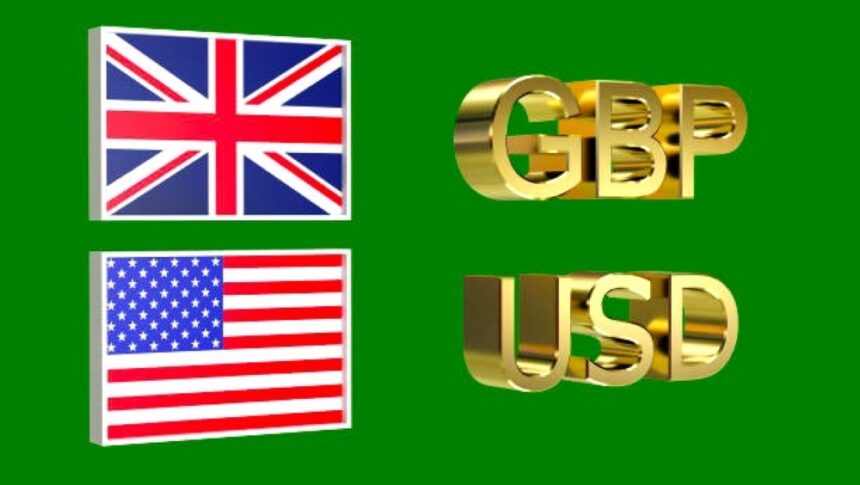The Pound Sterling (GBP) found some relief on Wednesday, bouncing from its four-week low near 1.3330 against the US Dollar (USD) in the European session. The recovery came as the US Dollar Index (DXY) softened slightly after testing resistance near 98.60, giving Sterling room to recover.
The bounce was also supported by a pause in the relentless surge of UK gilt yields, which had driven heavy selling pressure on Sterling earlier in the week. This shift in bond market momentum allowed GBPUSD to stabilize, though market sentiment remains cautious with key US economic data ahead.
UK Gilt Yields Cool After Historic Surge
UK bond markets have been in turmoil in recent sessions. The 30-year gilt yield surged to 5.75%, its highest level since 1998, as investors priced in mounting fiscal risks and a lack of confidence in the government’s ability to manage growing debt.
This move mirrored a global trend, with long-dated bond yields rising sharply in multiple economies as markets braced for heavier borrowing requirements and persistent deficits. Analysts warn that such moves signal deeper concerns about fiscal sustainability and government credibility.
However, Wednesday’s moderation in gilt yields offered some short-term relief for Sterling. The pause in the bond sell-off has eased some immediate pressure, but without clear fiscal reforms, volatility could quickly return to UK debt markets and the Pound.
Fiscal Discipline Pledge Supports Confidence
Adding to the improved sentiment was a statement from UK Chancellor Rachel Reeves, who reaffirmed the government’s commitment to tight fiscal controls. Reeves highlighted that her administration would keep a “tight grip on day-to-day spending” and adhere to fiscal rules to help bring down both borrowing costs and inflation.
This pledge helped soothe some investor concerns following July’s welfare spending announcements, which had stoked fears of worsening deficits. While the promise of discipline is welcome, traders remain cautious ahead of the Autumn Budget, where tough decisions on spending cuts or tax hikes are expected.
Global Debt Jitters Keep Markets on Edge
The turmoil in UK gilts is part of a wider global debt concern. Across major economies, investors are growing uneasy about governments’ mounting debt piles and the absence of credible plans to curb deficits.
National Australia Bank analysts summarized this sentiment, noting that there is a “lack of confidence in markets that the government is willing to address effectively the scale of the budget deficit and the speed of debt buildup.” Such concerns have fueled volatility in bond and currency markets alike, keeping safe-haven demand strong and weighing on risk-sensitive assets like Sterling.
All Eyes on US Data for Next Moves
Markets are now turning their attention to key US labor market data, which will shape short-term trends for both the US Dollar and GBPUSD.
JOLTS Job Openings (July): Expected later Wednesday, with consensus around 7.4 million openings, just below June’s 7.44 million.
Nonfarm Payrolls (NFP) (August): Friday’s report will be the week’s main event, potentially setting the tone for the Federal Reserve’s next policy move.
Weak labor market data could reinforce expectations of a September rate cut, pressuring the Dollar and lifting Sterling further. Conversely, stronger-than-expected numbers could provide the Greenback with a fresh boost.
Fed Rate-Cut Bets Remain Strong
According to the CME FedWatch Tool, markets are currently pricing in a 92% probability of a 25-basis-point rate cut at the Fed’s September meeting. Recent remarks from Federal Open Market Committee (FOMC) members have leaned dovish, emphasizing risks to the labor market and signaling readiness for policy adjustments to support growth.
This dovish backdrop, combined with cooling gilt yields and reassurances from UK fiscal authorities, gives Sterling a narrow window to extend its recovery provided upcoming US data doesn’t trigger another wave of Dollar strength.
Technical Outlook for Pound
Short-term momentum for GBPUSD appears cautiously constructive as the pair holds above the 1.3300 zone. However, the outlook remains highly data-dependent.
Support levels: 1.3300 and 1.3250.
Resistance levels: 1.3400 and 1.3450.
A dovish Fed pivot combined with stable gilt markets could open the door for a recovery toward the 1.3450 region. Conversely, a strong US jobs print or renewed bond market turbulence could quickly erase recent gains.
Conclusion
The Pound Sterling’s rebound reflects a temporary reprieve rather than a full recovery. Cooling gilt yields and the UK government’s pledge of fiscal discipline have eased immediate pressures, but structural concerns about debt and deficits remain.
With US JOLTS and Nonfarm Payrolls data ahead, the next 48 hours will be critical in shaping GBPUSD dynamics. Traders should remain alert to volatility as both the UK’s fiscal outlook and the Fed’s policy trajectory continue to drive sentiment in global markets.









